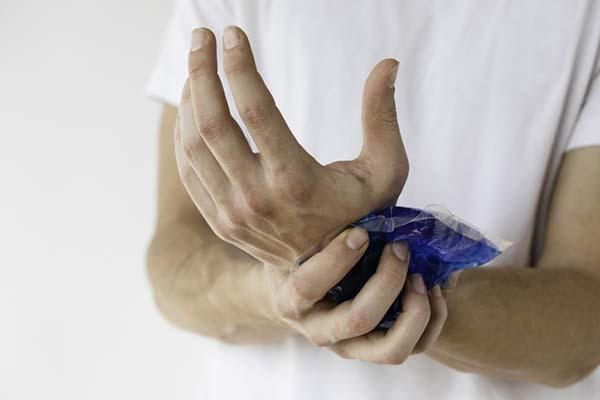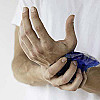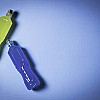Cold versus heat for pain relief: How to use them safely and effectively

Adapted from Pain Relief Without Drugs or Surgery , Medical Editor: Melissa L. Colbert, MD, Instructor in Physical Medicine and Rehabilitation, Harvard Medical School; Interim Medical Director, Spaulding Rehabilitation Outpatient Center.
For certain types of injuries, the use of cold or heat may help dissipate pain. There isn’t an abundance of scientific data to support the use of cold and heat, but these two widely used methods, if applied safely, may complement other pain relief treatments.
Cold, in the form of cold packs or an ice massage (rubbing a painful area with an ice cube), is effective in the hours right after an injury. In addition to pain relief, the application of cold can decrease inflammation and muscle spasms and may help speed recovery from an injury. Cold is also often recommended for back pain and other types of chronic pain, and many people find it helpful.
After the swelling and redness have gone down — or as needed, in the case of chronic pain — heat may be more useful. Moist heat can raise pain thresholds and decrease muscle spasms in people suffering from osteoarthritis, according to limited data. And very small studies suggest that heat may be useful for treating tendinitis early on. Other trials suggest heat wraps may reduce back pain and disability.
How to use cold to relieve pain
Standard therapy for injuries such as a sprain or strain — an injury in which you have stretched or torn a ligament, tendon, or muscle — is the PRICE technique, which stands for protection, rest, ice, compression, and elevation. What this means is that you protect and rest the injured part, apply a cold pack to it, compress the injured area if possible with a bandage, and elevate it to reduce swelling. Cold packs are also used to help relieve headaches, foot pain, and longer-lasting conditions such as tendinitis and some kinds of back pain. Cold can also reduce swelling from inflamed joints in some forms of arthritis.
If you suffer a sudden sprain or strain, applying cold can reduce swelling by slowing cell activity, constricting blood vessels, and blocking the release of chemicals known as histamines. The application of cold can also decrease pain by numbing the area. An ice massage combines these benefits with the pain-reducing effects of gentle pressure applied to the injured tissue.
In cases of chronic pain, proactive use appears to be the most effective icing strategy. If you’re about to engage in an activity that could cause a flare-up, try applying cold before the activity as well as afterward. This practice creates a temporary distracting stimulus (cold) that intercepts pain signals before they are relayed to the brain, and it helps to retrain the way the brain perceives the chronic pain. For some people, the effects of cold application can last for minutes, while for others it can last hours.
To apply cold, use a store-bought cold pack kept in the freezer, a bag of frozen vegetables, or ice cubes in a sealed plastic bag. Do not put the cold pack or ice directly on the skin; wrap it in a towel or pillowcase first to avoid tissue injury. Apply cold for no more than 20 minutes at a time, four to eight times a day for the first two days after an injury. Once the acute phase of the injury has passed — usually within a couple of days — you can apply heat.
How to use heat to relieve pain
As many people with arthritis know, applying a warm moist towel to a sore joint or taking a warm shower or bath can temporarily relieve pain. Heat raises your pain threshold and relaxes muscles. The goal of most heat therapy is to increase tissue temperature by 9° to 12° F. Your heat source should not be uncomfortably hot: exposure to temperatures above 113° F may be painful, and above 122° F may burn your skin.
There are several ways to apply heat. Hot packs, heating pads, hot whirlpools, and heat lamps, for example, can warm up the skin, muscles, and other tissues to a depth of about an inch below the surface of the skin. Deep heat treatments performed by a physical therapist use other kinds of energy, most often ultrasound but sometimes shortwave or microwave electromagnetic energy, to generate heat in tissues about two inches below the surface.
Moist compresses, such as a warm damp towel, are more efficient in transferring heat to the body than dry electric heating pads. At home, put a moist towel in a plastic bag to make the heat last longer. You can also buy gel packs that can be warmed up in the microwave oven. Be careful not to make them too hot. The gel packs are convenient and easy to use, and they can also serve as cold packs if you put them in the freezer. Whether you use a pack hot or cold, do not place it directly on your skin. Wrap it in a towel or pillowcase.
Do not use heat on a swollen, red, or hot area, or an injury you have just sustained, as it can cause more inflammation.
Disclaimer:
As a service to our readers, Harvard Health Publishing provides access to our library of archived content. Please note the date of last review or update on all articles.
No content on this site, regardless of date, should ever be used as a substitute for direct medical advice from your doctor or other qualified clinician.














